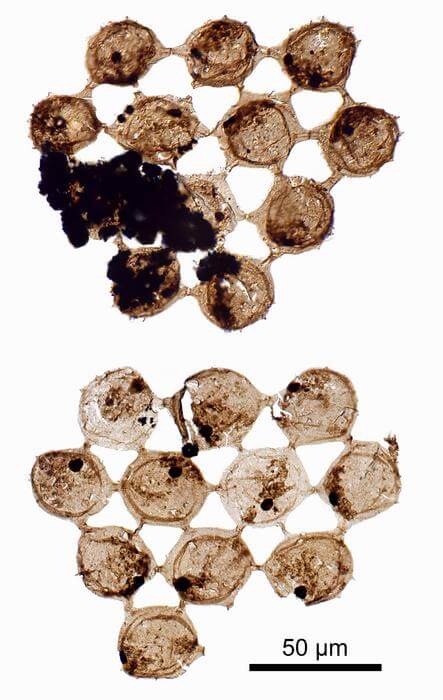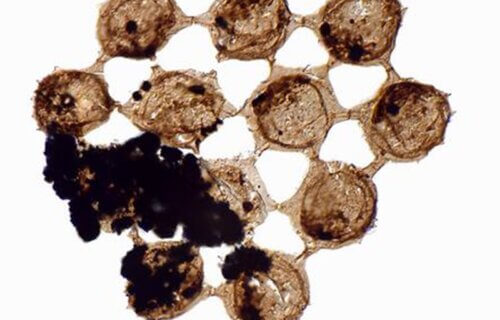LEICESTER, United Kingdom — It’s difficult to fathom just how minuscule an amount of time humans have inhabited the Earth. The planet was revolving around the Sun for billions of years before we showed up. Now, researchers from the University of Leicester have discovered of a new type of microfossil that’s providing a peek into the distant past of our planet’s oceans — half a billion years ago.
The tiny, fossilized organisms resemble modern-day algae, researchers explain. As such, they theorize this discovery may supply much-needed insights regarding climate changes that affected our oceans. Microscopic in scale, the fossils look similar to spiny balls connected together.
“When I first saw them, I had no idea what they were. I wondered if they could be animal eggs, or some new type of organism. There’s nothing quite like them, living or extinct,” says Dr. Tom Harvey, from the University of Leicester School of Geography, Geology and the Environment, in a media release.
As more and more specimens appeared, Dr. Harvey was able to identify similarities with modern green algae that live floating within the plankton of so many ponds and lakes.
“The fossils have the same sort of colonial structure as the modern algae, with cells linking together, explaining their neat, geometric arrangements. Surprisingly, though, the fossil examples lived in the sea, giving a rare glimpse of the early marine plankton,” Harvey continues.

The research team stresses these fossils are so important due to their incredible age. They lived around the time animals first began evolving (the Cambrian ‘explosion’ of life) – and their shape/appearance is likely no coincidence. In the modern environment, phytoplankton serve as the fundamental food source for nearly all life in the oceans. However, current groups of phytoplankton evolved relatively recently. Thus, scientists do not know which groups inhabited the Cambrian oceans all those years ago.
“When we look at modern plankton, we see that algae develop colonies when animals are trying to eat them. It’s a defense mechanism. So, the existence of colonial algae in the Cambrian Period suggests that early animals were evolving to feed in the plankton, starting a predator-prey relationship that has continued ever since,” Dr. Harvey explains.
“Considering that the plankton underpins life in the oceans, and fossil plankton helps us build ancient climate models, these small fossils have a big role in telling the history of life on Earth.”
This discovery will likely spark a reassessment of other early microfossils. For a long time, scientists have believed spiny fossilized balls found individually were the so-called dormant cysts of single-celled life. Dr. Harvey says this work challenges that notion in a major way.
“I wonder if we’ve been getting it all wrong, and in fact lots of these microfossils were living as colonies in the plankton. It’s easy to accidentally break up the fossils as we extract them from the rocks, so we all need to get back to the collections, back to our labs, and find out how common they really were,” Harvey concludes.
The study is published in the Proceedings of the Royal Society B Biological Sciences.
